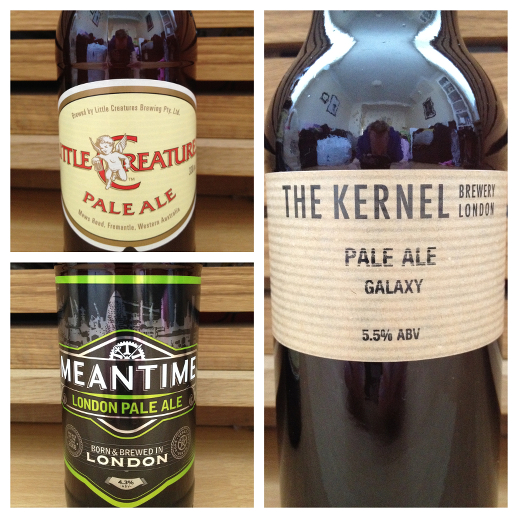By Roger Clapham
Lately, I’m sorry to say that I’ve become incredibly bored by the craft brewer’s favourite beer, the IPA. There’s nothing wrong with a good IPA, on the contrary in fact – it’s a brilliant beer style and done well it can be uniquely satisfying and full of flavour. However, increasingly I’ve seen so many breweries producing IPA-style beers with the hop-o-meter readings turned up to and past eleven, and with alcoholic content levels high enough to make all but the most seasoned (read pickled) livers quake with fear. So in response to that I’ve started drinking a lot more pale ale, the more traditional alternative – and historical forerunner – to today’s IPAs.
Pale ale itself as a style of beer is fairly hard to define exactly – different brewing techniques and varying hop levels have meant there is a huge range of beers that can be termed as ‘pale ale’. It’s something of a catch-all term, and includes the old school pint of bitter your granddad would drink, the famous Bass pales ales from nineteenth century Burton upon Trent, and the modern American and American-inspired versions of pale ale that are in vogue today. Originally, pale ale was simply beer brewed with pale malts, but it became a term used to cover this wide variety of beers after its popularity grew significantly in the late 1800s, overtaking stout and porter as the working man’s drink of choice, before being born again in California in the 1980s as the nascent microbrewery culture took hold (the Sierra Nevada Pale Ale you can find in most supermarkets now is the classic in this field).
Naming conventions aside though, if your taste buds have had enough IPA-induced pummellings of late, here are a few pale ales worth sampling…
Meantime Brewing in Greenwich make some great beer, and oddly enough don’t seem to get a huge amount of praise for it. They are undeniably aiming at the top (expensive) end of the market but the beer is genuinely very good. Their London pale ale is a 4.3% session beer, with a good malt structure in the taste, and a light, subtle bitterness that’s simple, pleasant, and not overpowering. Essentially, it’s a traditional British pale ale, an unfussy beer quietly going about its business, and for that we should be thankful.
Next, a more modern take on the style by the ever reliable Kernel Brewery. The Kernel does a variety of pale ales, but this one is 5.5% one brewed specifically with Galaxy hops – of the various versions they produce the lo-fi label will tell you what hops they’ve used. It’s a drier version of pale ale, and is verging on what could be described as IPA territory with grapefruit and sour notes, but more rounded than that and a fuller flavour than an IPA due to the malt being recognisably there in the taste too. As ever with the Kernel, it’s well worth the price of admission.
And finally, fully in thrall to the 1980s American version of pale ale, comes the Little Creatures version, all the way from Fremantle, Western Australia. This is my favourite of the three here, and is frequently on stock at home. Its 5.2%, feels relatively thick in the mouth, and has a stronger malt character than both the Kernel and Meantime versions, despite there being a distinctive citrus element to the fore. Ultimately, it’s genuinely refreshing and damn well delicious, and my only real criticism of it is the 330ml bottles it comes in – they’re simply not big enough. So Little Creatures, ship it over here in pints please, or 500ml bottles at least – the thirst-ridden inhabitants of these isles demand it. I thank you.
